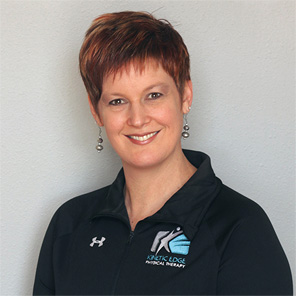Back to school season seems to be hurled upon us earlier and earlier each year, assimilating many of the other major holidays. For some, seeing school supplies return front and center in local stores conjures up feelings of excitement and joy, while for others the thought of picking out a new school folder and returning to school brings upon anxiety.
Many of us assume that children are excited about seeing their friends again and getting back into the routine of school. And hopefully, this is the case for most kids. But unfortunately, going back to school can spur on fear and nervousness for some children.
Occupational Therapist Elise Spronk specializes in pediatric therapy and is sharing six ideas for a successful school year for kids who are anxious about the new school year:
- Stop asking kids if they are ready for school a month before it’s the first day of school. As adults, we are quick to ask school-aged children “Are you ready for school?” We don’t necessarily think about the weight of our question. Consider how you feel when people ask if you’re “ready for Christmas” before Thanksgiving. Rather than contributing to the speed at which life seems to be passing us by, help slow it down by allowing kids to enjoy summer.
- Make a list of what will be the same next school year and what will be different. Often times, the unknown is what causes children to worry. However, when they begin to see a list of what will be consistent, this can ease their minds.
- Visit the classroom and meet the teacher. Ask the new teacher if you can arrange a quieter time (or when the quieter time of open house is) to see the new classroom and meet the teacher if your child struggles with louder, busy environments.
- Stop telling your child to just calm down. Consider what is calming from a sensory standpoint and incorporate that into your morning/daily routine. In considering your own stress, how often does it work to just tell yourself to calm down? Most likely you are using other strategies to help in your own stress-relief plan. Do the same for your child. Sucking on something sweet is very calming for our sensory system, so consider sending a water bottle to school and sucking your morning beverage through a straw. Deep pressure, like a massage is also calming so add some extra squeezes (hand hugs) up and down your child’s arms and legs when hugging him or her goodbye in the morning.
- Teach your child deep breathing techniques including inhaling through the nose and exhaling through mouth when he or she feels worried. Deep breathing increases oxygen to the brain and stimulates the part of the brain (parasympathetic nervous system) to promote calmness. To make this more fun and teach proper breathing, have your child lie on his back with his favorite stuffed animal on his belly. When breathing correctly, the stuffed animal should rise, but the chest will not. Hold the breath a few seconds and then blow it out. Repeat until the child feels more relaxed.
- Consider reflex integration exercises, if appropriate. There are several reflexes that we are born with, which not integrated later in infancy can contribute to anxiety. These include the Moro (or Startle) Reflex, and the Fear Paralysis Reflex. Challenges with the neural chassis (brain stem, midbrain, RAS) can also contribute to anxiety. Exercises can be prescribed to integrate the reflexes and assist in decreasing anxiety.

Consider tapping into the expertise of others if you feel your child’s anxiety about school (or other things) is limiting his or her ability to participate. This doesn’t mean you’ve failed as a parent; your child might just require a little extra help to overcome their anxiety. You likely wouldn’t consider attacking strep throat alone, so why should anxiety be any different? Counselors and occupational therapists can offer additional child-specific interventions to help in this journey.
Our hope at Kinetic Edge Physical Therapy is that children and parents can approach this school year with a healthy attitude and big, genuine smiles, eagerly awaiting all that the school year has to offer. Our occupational therapy team specializes in pediatric therapy and can offer additional information on these six steps to help your child learn how to regulate and keep calm for the school year ahead.
Call us at 866-588-0230 or email us for more information on this article or our pediatric therapy services.
Acorns to Oaks refers to our pediatric therapy services at Kinetic Edge Physical therapy. Acorns to Oaks helps little people grow to do big things by assessing and then improving their foundational development skills. Just as an acorn needs to put down deep roots to grow into a strong oak tree, we approach development from the bottom up, helping kids and their families prepare good groundwork to enhance the potential to learn, play, and grow.
 Acorn to Oaks benefits a wide variety of children. Some examples include kids struggling with learning, picky eaters, children having difficulty calming down or staying focused, kids with balance and coordination difficulties, and those with delayed fine motor skills.
Acorn to Oaks benefits a wide variety of children. Some examples include kids struggling with learning, picky eaters, children having difficulty calming down or staying focused, kids with balance and coordination difficulties, and those with delayed fine motor skills.




